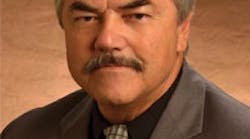Dr. Klaus Blache is research professor, industrial and systems engineering, and director of the Reliability and Maintainability Center (www.rmc.utk.edu), University of Tennessee College of Engineering in Knoxville. He was chairman of the Society of Maintenance & Reliability Professionals (www.smrp.org) from 1997 to 1999, when he was manager of manufacturing reliability and maintenance at General Motors (www.gm.com).
PS: What are the big changes you’ve seen in maintenance and reliability from when you were SMRP chair to now?
KB: Predictive technologies were around, but today they’re much more portable, integrated with each other, and user-friendly. CMMS software is more aligned with what needs to happen on the plant floor and the business enterprise. The enhanced CMMS and related tools capabilities collect much more data now, but not always decision-enabling information. I still see many companies that are data rich, but information poor. More tools, such as FMEA, RCA, and RCM, are being implemented, but more companies need to understand the importance of properly engaging the workforce to enable successful change and sustainability. However, there is still a lot of opportunity for savings and gaining competitive advantage here. Sensors and condition-based monitoring, along with wireless/remote applications, are providing more attainable and higher quality data. Overall, maintenance and reliability are now more viewed as a profession of choice, instead of just something that needs to get done. Companies better understand the benefits of a robust maintenance and reliability process and that it’s not just about reducing maintenance costs. The big benefits are in improved safety, increased productivity, better quality, and reduced manufacturing/processing costs.
PS: What is the one accomplishment under your leadership that you’re most proud of?
KB: I hesitate taking any individual credit, because it was such a collective effort. The CMRP exam was getting lots of discussion, led by a focused team, along with continual planning of SMRP activities. Also, the annual conference was growing rapidly and with that came the usual issues of logistics, with questions such as how big do we plan for? SMRP had already expanded beyond being just a volunteer-run organization, and it was this that took up most of my time. The main reason that I stayed on as SMRP chairman into a second year was because we were in the middle of extensive growth-related changes and transitioning to a new management organization. So, if I had to point at one thing, it would be leading SMRP through changes needed for running a larger organization.
PS: Who in the SMRP organization had the biggest influence on you and your career?
PS: Where is the maintenance and reliability profession headed, and where would you like to see it go?
KB: Although demand has been continually strong. I see an increased interest in the field over the past few years. The demand for engineers with a maintenance and reliability background has been climbing quickly. This is evidenced by the number of maintenance and reliability summer interns that we at the University of Tennessee Reliability and Maintainability Center place, along with the number of company inquiries for graduates. In the past three years we have had R&M engineering students doing summer internships in over half of the United States. As to what major changes are expected in R&M, I can answer this based on a recent benchmarking study with over 300 companies. The key items identified were more plant involvement, hiring more R&M engineers, more R&M training, more designed-in reliability and maintainability, more standardized components/replacement parts, component reliability improvements, better use of R&M in decision making, standardized controls/reduced complexity, more data-driven processes including predictive technologies, and more use of sensors and timely feedback. In the big picture, I expect to see more executive champions and positions tied to maintenance and reliability. This will give it more significance and visibility in corporate strategies and goals. As these organizations clearly understand how maintenance and reliability really impacts the various aspects of their businesses, even more support will be forthcoming. As to where I would I like to see it go, I’d like to see three things — designed-in reliability and maintainability in purchasing specifications; decisions made based on lifecycle costing for assets; and strategic company decisions based on data, so when a CEO says let’s cut maintenance cost by 10%, the R&M executive can respond with real data and state the expected negative impact on safety, productivity, quality, and overall costs.
